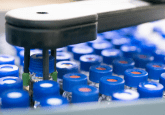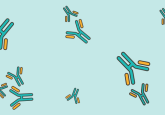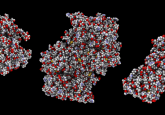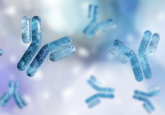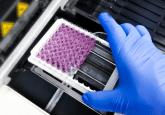An author’s perspective: Barry Jones on advancing ACTH research to treat Cushing’s disease
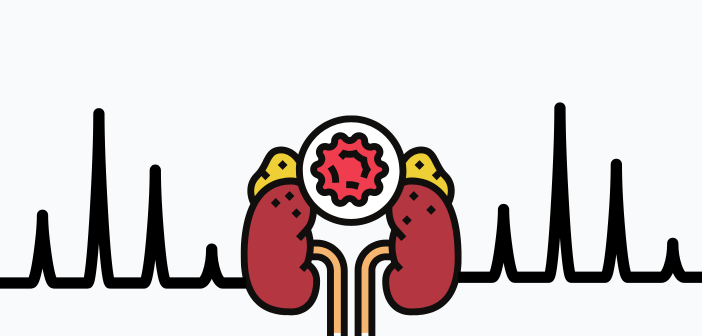
Author: Barry Jones, Director of Biomarkers and Bioanalysis, Crinetics Pharmaceuticals (CA, USA)
 As the Director of Biomarkers and Bioanalysis, Barry Jones leads biomarker and PK measurement strategies for Crinetics Pharmaceuticals (CA, USA) in clinical studies supporting their drug development pipeline for rare endocrine diseases. After receiving his PhD in Physical Chemistry from Binghamton University (NY, USA), Barry managed the University’s Mass Spectrometry Core facility for proteomic research until joining Advion Biosciences (NY, USA) in 2007. Barry led the large molecule LC–MS team at Q² Solutions (NY, USA) prior to starting his current role at Crinetics in 2022. Dr Jones is particularly interested in the application of hybrid immunoaffinity-LC–MS, high-resolution mass spectrometry, and low-flow chromatography techniques to regulated bioanalytical methods, as well as the scientific challenges and validation strategies for LC–MS biomarker assays supporting drug development.
As the Director of Biomarkers and Bioanalysis, Barry Jones leads biomarker and PK measurement strategies for Crinetics Pharmaceuticals (CA, USA) in clinical studies supporting their drug development pipeline for rare endocrine diseases. After receiving his PhD in Physical Chemistry from Binghamton University (NY, USA), Barry managed the University’s Mass Spectrometry Core facility for proteomic research until joining Advion Biosciences (NY, USA) in 2007. Barry led the large molecule LC–MS team at Q² Solutions (NY, USA) prior to starting his current role at Crinetics in 2022. Dr Jones is particularly interested in the application of hybrid immunoaffinity-LC–MS, high-resolution mass spectrometry, and low-flow chromatography techniques to regulated bioanalytical methods, as well as the scientific challenges and validation strategies for LC–MS biomarker assays supporting drug development.
-
Please could you provide a brief summary of your paper
We developed a hybrid IA–LC–MS assay to selectively measure low concentrations of ACTH(1–24) in human plasma in the presence of endogenous ACTH(1–39). Our paper describes the rapid development of that method, which involved adaptation of a previously published assay to measure ACTH(1–39).
-
What was the initial inspiration or problem that sparked the idea for this paper?
As part of our Phase 1 study that Crinetics Pharmaceuticals Inc. (CA, USA) conducted for the treatment of ACTH-dependent Cushing’s syndrome and congenital adrenal hyperplasia, we wanted to understand the dynamics of the ACTH-MC2R (melanocortin 2 receptor) system in the context of a cosyntropin-stimulation test in healthy subjects who have received doses of our ACTH-receptor antagonist. It’s a complex picture; both endogenous ACTH(1–39) and exogenous ACTH(1–24) are present with drug onboard and bound to the MC2 receptor. We needed to quantify ACTH(1–24) separate from ACTH(1-39), and this was a challenge with the existing immunoanalytical assays available.
-
How did your perspective on LC–MS/MS evolve from the beginning of the research to the publication?
Using an antibody meant for ACTH(1-39) for quantitation of ACTH(1-24) was further evidence that we can leverage cross-reactivity of a capture antibody to measure closely related peptides, but it makes us think about the role of the antibody in this analytical setup. Here, we’re enjoying a certain degree of lack of specificity. How far can we take this with liquid chromatography and mass spectrometry on the back end? Do we need an antibody, or will a less-specific separation suffice?
-
What do you hope the bioanalytical community takes away from this paper?
I think this adds to the work that is out there for high-sensitivity hybrid IA–LC–MS/MS assays for intact peptide quantitation. Our coauthors did a great job in the laboratory by quickly adapting the published methodology to ACTH(1–24) with some improvements around bead conjugation strategy. The work continues to emphasize the power of quantitative LC–MS, particularly when combined with antibody binding.
-
Are there any key questions or areas you feel still need to be addressed in this field?
Although there are some very good papers in the literature describing mass spectrometry quantitation of low abundance circulating peptides, much of the hybrid IA–LC–MS work out there involves digestion of proteins. There are different considerations for the measurement of intact peptides, particularly when they are low concentration such that one wants to employ low-flow chromatography to drive sensitivity. Issues with assay robustness can be greater than with digested workflows. More analytical solutions are needed to address the challenges associated with quantitation of endogenous peptide hormones using mass spectrometry.
-
With the potential for multiplexing in future studies, how do you see this hybrid IA-LC–MS/MS method evolving in terms of application or expanding to other clinical conditions or biomarkers?
Cross reactivity of a capture antibody can allow for potential multiplexing in hybrid IA-LC-MS assays, as suggested in our paper for ACTH(1–39) and ACTH(1–24). However, this can only go so far. The immunoaffinity capture limits the breadth of multiplexing to closely related peptides, unless multiple antibodies are used in the workflow. When we don’t need the specific binding of the antibody to answer our questions, and rather just need it to sufficiently purify our sample to enable robust downstream chromatography, we can use a less specific purification that is orthogonal to the sample preparation and LC separation. At the 18th WRIB conference (6–10 May 2024; TX, USA), we showed a comparison in ACTH(1-39) quantitation between two immunoassays and a nanoLC-MS/HRMS assay employing online size exclusion chromatography in a multi-dimensional LC setup, without use of a capture antibody. We aim to publish the work soon. This design should also allow for multiplexing of disparate, low abundance peptides in a single assay, with potential for disease-specific panels, without the complications that can arise from incorporation of a capture antibody into the workflow.
Disclaimer: the opinions expressed are solely those of the author and do not express the views or opinions of Bioanalysis Zone or Taylor & Francis Group.

